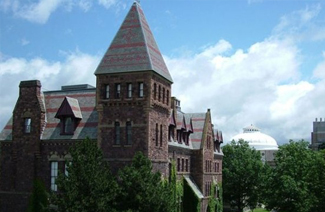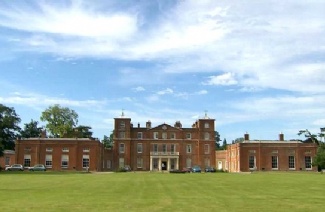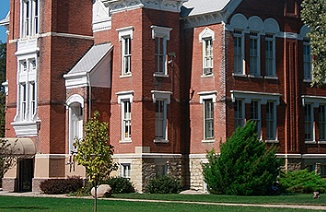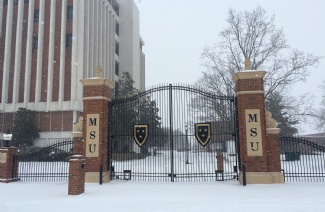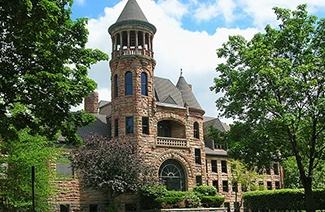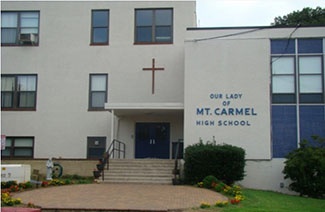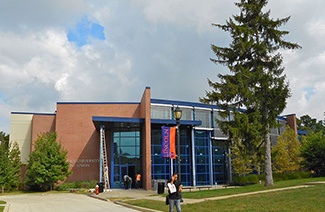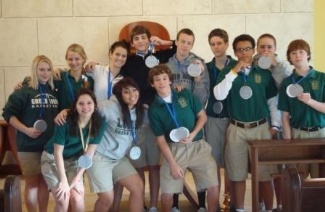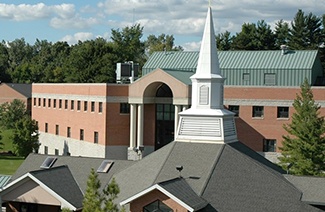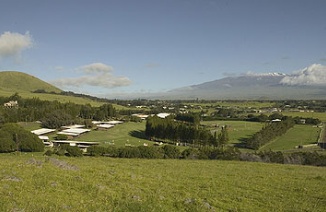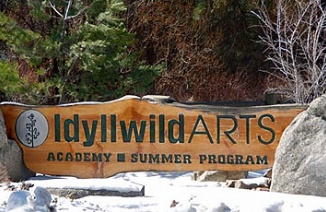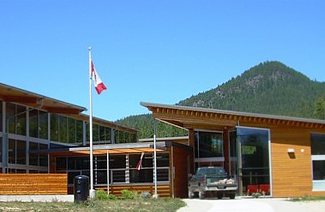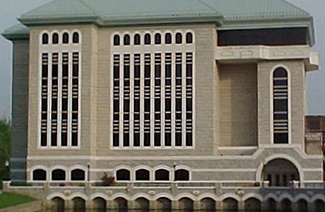为了便于大家更好的备考16年11月26日的雅思考试,小编为大家整理了2016年11月26日雅思阅读考试真题详细解析,备考雅思的小伙伴可以一起来了解一下。欢迎持续关注
Passage 1 :
题目:Right Whales
题号:旧题
文章大意:
介绍新西兰的渔业以及当地鱼类的品种,本土的淡水鱼类比其他地方少, 很多淡水鱼的鱼种是由北美洲引入的。
Right Whales
They dive 600 feet, brushing their heads along the seafloor with raised,wartlike patches of skin,sometimes swimming upside down^ big as sunken galleons, hot-blooded and holding their breath in cold and utter darkness while the greatest tides on Earth surge by. Then they open their cavernous maws to let the currents sweep food straight in. This is one way North Atlantic right whales feed in the Bay of Fundy between Maine, New Brunswick, and Nova Scotia. Or so the experts suspect, having watched the 40- to 80-ton animals surface with mud on their crowns. Mind you,they say, that could result from another activity-one nobody can imagine yet.
Science calls these animals Eubalaenaglacialis, “good,or true,whale of the ice. Heavy irony is embedded in the common name,right whale,given by whalers who declared them the right whales to kill. Favoring shallow coastal waters, they passed close to ports,swam slowly, and often lingered on the surface. Such traits made them easy to harpoon, and they tended to conveniently float after they died,thanks to their exceptionally thick blubber layer, which whalers rendered into oil. The first of the great whales to be hunted commercially, E. glacialis lit the lamps of the Old World from the Dark Ages through the Renaissance. By the 16th century Europeans had exhausted the eastern North Atlantic population and turned to North America's coast. There whalers set up stations in Labrador and took 25,000 to 40,000 related bowhead whales along with an unknown number of rights (records seldom distinguished between these two similar looking titans).
By the time New Englanders got into the right-whale-killing business, they were chasing leftovers. The Yankees hunted down another 5,000 or so, partly because whales became even more prized for their baleen than for oil. Hundreds of strips of this tough yet flexible material, each six to nine feet long and finely fringed, drape from the upper jaw. They form a colossal sieve that allows the giants to strain tiny crustaceans from the water for food- a billion flea-size copepods a day to supply the minimum 400,000 calories an adult whale needs (the ratio of a whale’s body mass to its prey's is 50 billion to one). Society, however, thought baleen was best used for corset stays, stiffeners in fashionable gowns, umbrella ribs, and (consider: “I’m going to whale on you!") horsewhips.
As the 20th century began, the number of whales left in this species was possibly in the low dozens. Commercial harpooning wasn’t banned until 1935. Their recovery since then might be compared to that of a human victim of a vicious assault: painfully slow progress, offset by relapses,with the ultimate outcome very uncertain.
About 350 to 400 North Atlantic right whales exist today. The survivors migrate along North America's East Coast between feeding grounds in the Gulf of Maine and wintering sites farther south-roughly 1,400 miles one way for pregnant females that journey to traditional calving areas off Georgia and Florida. They travel through an intensely urban stretch of ocean.
A research team from Boston’s New England Aquarium spends the summer stationed in Lubec, Maine,studying the whales that gather to feed and socialize in the Bay of Fundy and nearby Roseway Basin,off Nova Scotia's southern tip. The scientists, who have built an archive of around 390,000 photographs, can recognize nearly every whale in the population by its unique callosity pattern (those wartlike patches on their heads), along with scars and other irregularities, and, increasingly, DNA samples.
One of their favorites is #2223,first seen in these waters in 1992. It was a baby, and so fond of cavorting around boats that they named it Calvin after the mischief-loving cartoon kid. That same year a fisherman reported a calf circling its dying mother, and when the team recovered the carcass of the female, they identified her as #1223-Delilah,Calvin's mom. Her corpse revealed tissues crushed by a powerful collision, probably with one of the cargo carriers plying the shipping channel that used to run straight through the bay's center, where the whales concentrate. The eight-month-old calf's prospects looked grim, for it should have been nursing Delilah's rich, warm milk for several more months.
In July 1993 researchers poring over fresh photos from the bay found images that looked like a match for Calvin's baby pictures. Yes! The orphan had somehow made it alone. DNA from a skin sample taken in 1994 showed that curious, hardy Calvin was in fact a girl whale. The following year brought the first report of her entering a surface-active group, or SAG, in which both sexes mingle with splashing,shoving,rolling, stroking signs of courtship. Though she wouldn’t mature sexually until about ten years of age,subadults her age appear drawn to the excitement of SAGs and get to practice behavior that may soon influence their breeding success. Fertile adult females are the most valuable segment of the population. They number fewer than a hundred. Calvin seemed on the verge of adding one more to their ranks.
For three years running, the researchers gauged the young female's blubber thickness with ultrasound. It's a tricky operation. "One whale’s reaction jolted the skiff hard enough to send me flying overboard,” Amy Knowlton of the research team recalled. Nevertheless, the researchers found Calvin growing pleasingly plump, a prime measure of health. On New Year’s Eve of 1999, she was recorded for the first time in the Georgia Bight, an expanse of shallow coastal waters off Georgia and Florida, where right whales give birth.
In summer of 2000 Calvin was once again in the Bay of Fundy,but this time she was snarled in fishing gear. Unbreakable polyblend ropes wrapped round her body, cut into the skin,and trailed in her wake,slowing her down. Then researchers lost sight of the young female.
Two to six right whales are found dead in a typical year, at least half of them killed by ship strikes or entanglement. Additional animals simply disappear. Since more than three-quarters of North Atlantic right whales bear scars from encounters with fishing gear, scientists wonder: How many of those missing are weighed down by ropes,nets, or crab and lobster pots for months or even years, the fat reserves that help keep them buoyant dwindling as they starve, fighting harder to reach the surface for each breath,until they finally give in to pain and exhaustion and sink?
Months dragged by. Someone finally spotted Calvin in Cape Cod Bay during her hobbled journey back south. A disentanglement team from nearby Provincetown, Massachusetts: raced for the site and made two attempts to slice away her bindings. They couldn't get them all, but when Calvin was seen during 2001,she had worked free of the remnants.
Three years passed, and Calvin showed up occasionally-but not in her usual summer haunts. Had the trauma sent her into a downward spiral? At the end of December 2004,near the North Carolina coast, she presented herself-with a brand new calf. Seven months later,in 2005, they were in the Bay of Fundy, where Delilah had brought Calvin as an infant.
The corridor traveled by Calvin and the other North Atlantic right whales has grown ever more crowded with fishing activities and busy shipping lanes. Plumes of contaminants flow from river mouths, and the underwater din of ship traffic probably makes it increasingly difficult for the whales to communicate and keep track of one another. Though not as visible as wounds from boat prows and propeller blades or fishing gear webbed around struggling bodies, heavy chemical and noise pollution may take a gradual toll.
During the 1980s the number of babies born annually was around 12. The total twice fell sharply in the 1990s until just a single calf appeared in 2000. Since then,the average has risen to more than 20 calves a year. Yet this remains 30 percent below the whales' potential rate of reproduction. Why? If scientists are to guide the species’ salvation, they need more data and more answers. Fast.
Passage 2
题目:The lost city(新题)
题型:匹配+填空
The lost city
Thanks to modem remote-sensing techniques, a ruined city in Turkey is slowly revealing itself as one of the greatest and most mysterious cities of the ancient world. Sally Palmer uncovers more.
The low granite mountain, known as Kerkencs Dag, juts from the northern edge of the C'appadocian plain in Turkey. Sprawled over the mountainside are the rums of an enormous city, contained by crumbling defensive walls seven kilometers long. Many respected archaeologists believe these are the remains of the fabled city of Plena, the sixth-century BC stronghold of the Mcdes that the Greek historian Herodotus described in his famous work The Histories. The short-lived city came under Median control and only fifty years later was sacked,burned and its strong stone walls destroyed.
British archeologist Dr Geoffiey Summer* has spent ten years studying the site. Excavating the ruins is a challenge because of the vast area they cover. The 7 km perimeter walls run around a site covering 271 hectares. Dr Summers quickly realised it would take far too long to excavate the site using traditional techniques alone. So he decided to use modem technology as well to map the entire site,both above and beneath the surface, to locate the most interesting areas and priorities to start digging.
In 1993,Dr Summers hired a special hand held balloon with a remote-controlled camera attached. He walked over the entire site holding the balloon and taking photos. Then one afternoon, he rented a hot-air balloon and floated over the site, taking yet more pictures. By the end of the 1994 season,Dr Summers and his team had a jigsaw of aerial photographs of the whole site. The next stage was to sensing, which would let them work out what lay below the intriguing outlines and ruined walls. "Archaeology is a discipline that lends itself very well to remote sensing because it revolves around space," says Scott Brantmg, an associated director of the project, lie started working with Dr Summers in 1995.
The project used two remote sensing techniques. The first is magnetometry which works on the principle that magnetic fields. All the surface of the Earth are influenced by what it buried beneath. It measures localised variations in the direction and intensity of this magnetic field. " The Earth's magnetic field can vary from place to place, depending on what happened there in the past." says Branting. "if something containing iron oxide was heavily burnt, by natural or human actions,the iron particles in it can be permanently reoriented,like a compass needle, to align with the Earth’s magnetic field present at that point in time and space." The magnetometer detects differences in the orientations and intensities of these iron particles from the present-day magnetic field and uses them to produce an image of what lies below ground.
Kerienes Dag lends itself particularly well to magnetometry because it was all burnt at once in a savage fire. In places the heat was sufficient to turn sandstone to glass and to melt granite. The fire was so hot that there were strong magnetic signanires set to the Earth’s magnetic field from the time - around 547 BC - resulting in extremely clear pictures. Furthermore, the city was never rebuilt, "if you have multiple layers confusing picture, because you have different walls from different periods giving signatures that all go in different directions," says Branting. "We only have one going down about 1.5 meters, so we can get a good picture of this fairly short-livedcity.”
The other main sub-surface mapping technique, which is still being used at the site, is resistivity. This technique measures the way electrical pulses arc conducted through sub-surface soil. It’s done by shooting pulses into the ground through a thin metal probe. Different materials have different electrical conductivity. For example, stone and mudbnek arc poor conductors, but looser, damp soil conducts very well. By walking around the site and taking about four readings per metre, it is possible to get a detailed idea of what is where beneath the surface. The teams then build up picnires of walls, hearths and other remains. "It helps a lot if it has rained, because the electrical pulse can get through more easily," says Branting. "Then if something is more resistant, it really shows up." This is one of the reasons that the project has a spring season,when most of the resistivity work is done. Unfortunately testing resistivity is a lot slower than magnetometry. "If we did (the whole site it would take about 100 years," says Branting. Consequently, the team is concentrating on areas where they want to clarify pictures from the magnetometry.
Remote sensing does not reveal everything about Kerkenes Dag, but it shows the most interesting sub-surface areas of the site. The archaeologists can then excavate these using traditional techniques. One surprise came when they dug out one of the fates in the defensive walls. "Our observations in early seasons led us to assume that wall, such as would be found at most other cities in the Ancient Near East," says Dr Summers. "When we started to excavate we were staggered to discover that the walls were made entirely from stone and that the gate would have stood at least ten metreshigh. After ten years of study, Pteria is gradually giving up its secrets."
Passage 3
题名:How reading be taught
题型:heading+摘要+判断
文章大意:
关于教学方法的讨论,主要讲解the whole-word , the whole-language和the phonic method 在阅读教学中的应用,其中还提到了controversial, combined等方法。
